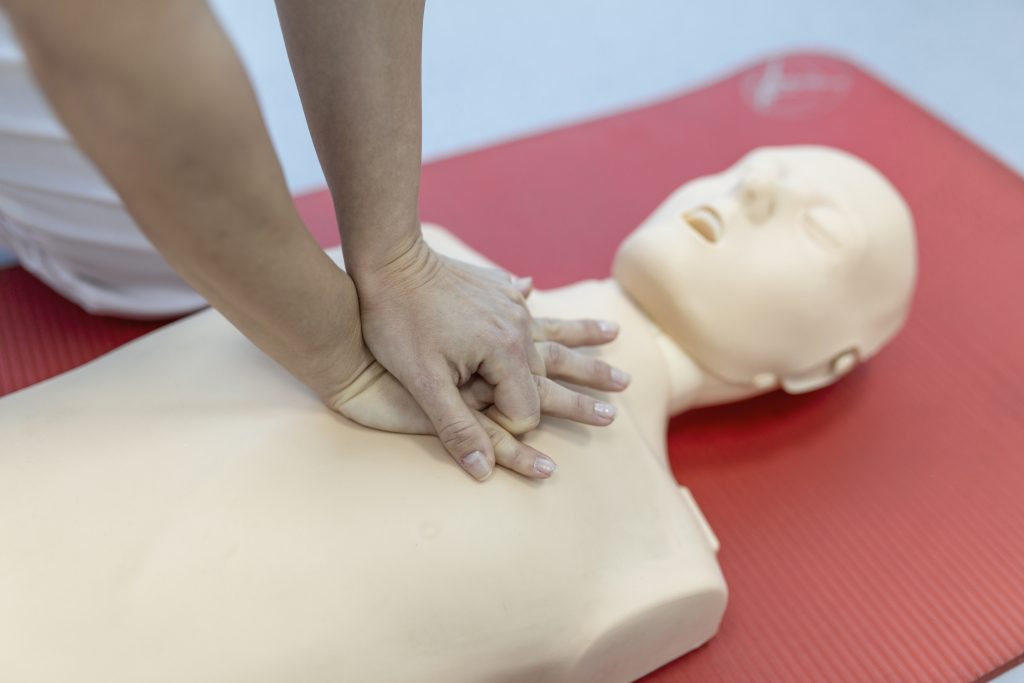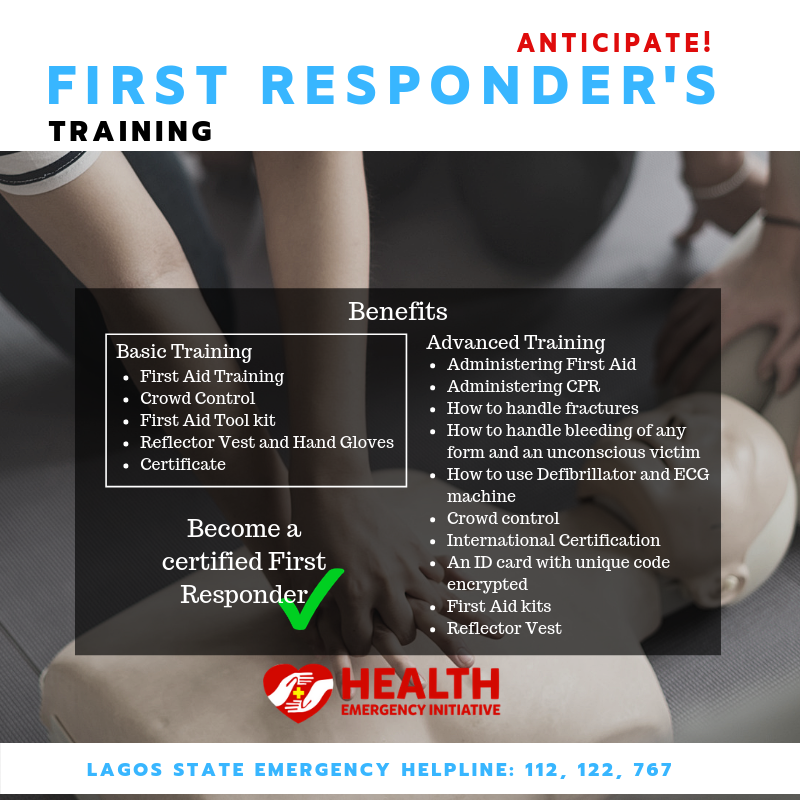Introduction
Cardiopulmonary resuscitation (CPR) is a critical life skill that can mean the difference between life and death in emergencies.
At Health Emergency Initiative (HEI), we empower community members to become certified First Responders with CPR knowledge that can save lives.
Here’s when and how you can effectively perform CPR during emergencies.
What is CPR?

CPR is a technique used to revive individuals experiencing cardiac arrest or respiratory failure. Cardiac arrest occurs when the heart stops beating, while respiratory failure occurs when the lungs cannot provide oxygen to the rest of the body.
The technique consists of a series of chest compressions and rescue breaths. When performed promptly and correctly, CPR can provide blood and oxygen to a patient’s vital organs until professional help arrives.
When Should You Use CPR? 3 Key Situations
Encountering a victim in an accident can be nerve-wracking. It’s common to wonder what types of accidents can trigger the need for CPR. In addition, it’s easy to doubt whether doing CPR when it’s not needed can accidentally harm an individual further.
Many situations can trigger the need for CPR, such as car accidents, near drowning, choking, electrocution, suffocation, injury or trauma. These accidents can result in sudden cardiac arrest or collapse.
When in doubt, it’s better to act and perform CPR than to hesitate–provided the situation is safe. Studies show that it is less risky to perform CPR when it’s not needed vs. not performing CPR when it is needed.
Perform CPR during these 3 key situations:
- The patient is not breathing. Administer CPR immediately. The average person only has between 4-6 minutes before irreversible brain damage occurs.
- The patient is gasping for breath: A person may still be undergoing cardiac arrest or stroke, even if they seem to be “breathing.” Gasping for air means the brain is not getting the oxygen it needs to survive.
- The patient’s heart has stopped beating: If the patient doesn’t have a pulse, start chest compressions to keep blood flowing to the heart and brain until help arrives.
How to Perform CPR: Remember “C-A-B” (Compressions, Airway, Breathing)
Remembering “C-A-B” (compressions, airway, breathing) can help you remember CPR’s basic steps. This order prioritizes chest compressions, so blood and oxygen can flow to a patient’s vital organs and increase their chance of survival.
Basic CPR Steps:
- Assess the situation: Check that the situation is safe before approaching the patient. For example, in a road accident, ensure that you and the patient are safely away from other cars before attempting CPR.
- Check for responsiveness: Tap the patient’s shoulder, and shout to check for a response.
- Call for help: Call 767, 112 or 122, Lagos’ official emergency number for police, ambulance and traffic services. If you cannot call, ask someone to call for help.
- Check for breathing: Listen and feel for signs of normal breathing for no more than 10 seconds. If the patient is gasping, this is also a red flag.
- [“Compressions”] Begin chest compressions: If the patient is not breathing or gasping, start chest compressions. Place the heel of one hand on the center of their chest (between the nipples), and interlace your fingers. Use your body weight to compress their chest at least 5 cm deep at 100-120 compressions per minute.
- [“Airway”] Open the patient’s airway: Gently tilt their head back and lift their chin to open their airway. This allows air to flow into their lungs during rescue breaths.
- [“Breathing”] Give rescue breaths: After 30 compressions, give two rescue breaths. Tilt the patient’s head back, pinch their nose shut and cover their mouth with yours to create a seal. Give two breaths for about a second each, ensuring their chest rises with each breath.
- Continue CPR: Alternate between 30 chest compressions and 2 rescue breaths.
You can stop CPR when the patient shows signs of life, or professional help takes over. Signs of recovery can include breathing, moving, opening their eyes, or making sounds. Make sure to check their pulse before you stop.
Learning CPR with Health Emergency Initiative
At HEI, we help redefine emergency medical care in Nigeria by adopting a transformative approach, encompassing both pre and post-hospital arrival.
Our First Responders training is an intensive 2-day training that includes tech-enabled CPR and First Aid training, among other benefits. After training, participants are examined and certified by the American Heart Association (AHA) as a First Responder.
To date, we have trained 613 First Responders, with the mission to train hundreds more. We welcome all community members from businesses, schools, youth groups, women and other groups, eager to save lives.
Sign up for HEI’s First Responder training: https://hei.org.ng/first-responders-scheme
For more information about HEI’s CPR training programs and initiatives, visit: https://hei.org.ng/get-involved



The introduction to CPR and the efforts by Health Emergency Initiative (HEI) are truly commendable. The detailed explanation of CPR, its importance, and the step-by-step guide make it clear and accessible. It’s inspiring to see HEI’s commitment to empowering community members with life-saving skills and the impressive number of First Responders trained so far. This initiative not only enhances emergency preparedness but also fosters a stronger, more resilient community. Well done, HEI!